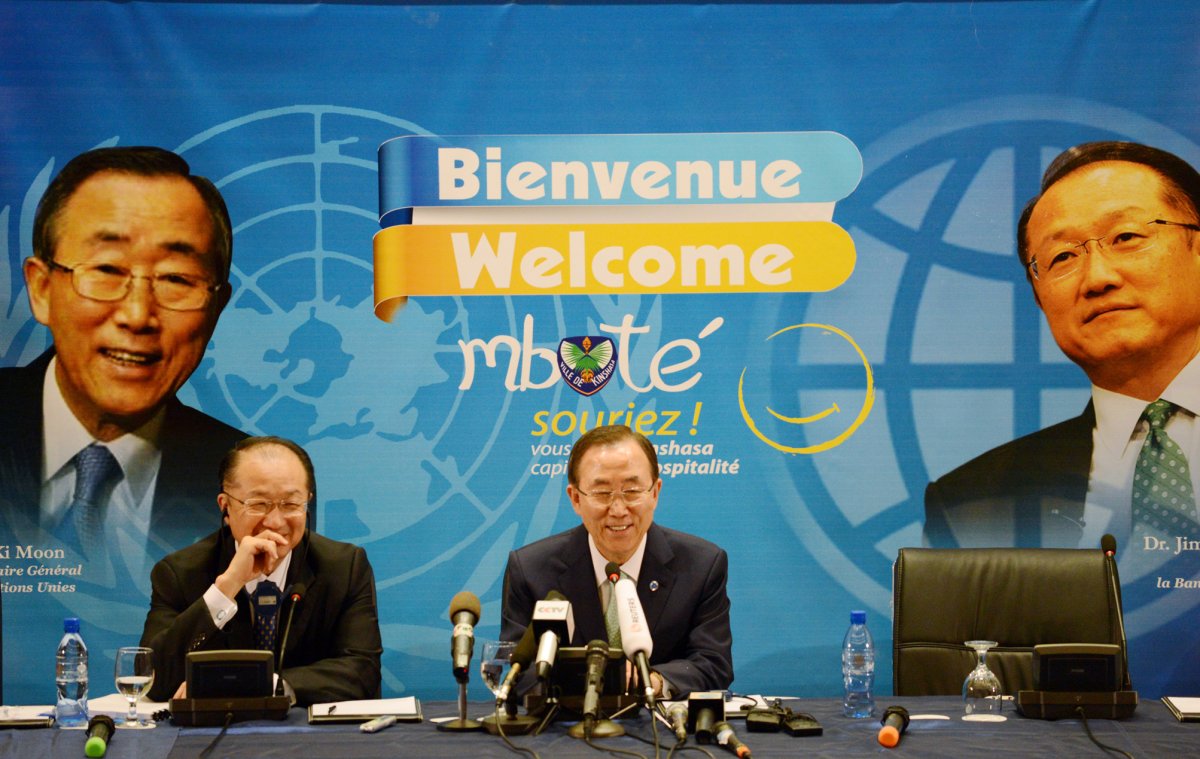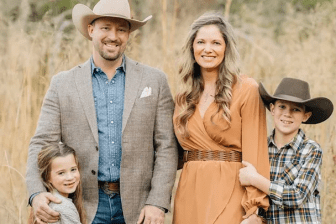GOMA, Congo – United Nations Secretary-General Ban Ki-moon stressed that security must go hand-in-hand with development in the troubled eastern city of Goma on Thursday, arriving just hours after a rebel group fighting government forces said they would respect a cease-fire to allow the visit to proceed.

“A peace deal must deliver a peace dividend – health, education, jobs and opportunities,” Ban said.
The U.N. chief is travelling to Congo, and specifically to Goma, for the first time since the Security Council authorized the creation of a new intervention brigade, which will be based in the city and will have an aggressive mandate allowing the peacekeepers to engage the M23 rebels stationed just north of the city.
The rebels announced hours before Ban’s arrival that they would halt fighting in order to avoid disrupting the diplomat’s trip. “We will not fight today to allow Ban Ki-moon’s visit to successfully take place. We also want to give peace a chance and ask the government to come back to the negotiating table in Kampala,” rebel spokesman Amani Kabasha said by telephone.
Read also: Democratic Republic of Congo rebel group breaks off peace talks
Last November the rebels handed both the government of Congo and the United Nations a humiliating blow when they succeeded in seizing Goma, a city of roughly 1 million that is both a major population centre and strategically important. The rebels retreated 10 days later after intense wrangling by the international community, including diplomatic pressure on Rwanda, which is accused of arming and financing the rebels.
- 16-year-old child of billionaire tech CEO reported missing
- U.S. tourist faces 12-year sentence for bringing ammo to Turks and Caicos
- Canada refused to repatriate woman from ISIS camp because she can’t be arrested: internal memo
- Bombardier, Airbus get exemptions from Canadian sanctions on Russian titanium
The U.N. came under scrutiny after the thousands of peacekeepers stationed in and around Goma stood by as the rebels marched into the city, claiming that their mandate does not allow them to engage militarily unless civilians are in imminent danger.
The new intervention brigade is meant to address that criticism by creating a standing force with a mandate that will allow them to fight the rebels, though only around 100 members of the brigade have arrived so far. Although the creation of the brigade was front and centre during Ban’s trip, he travelled to Congo with World Bank President Jim Yong Kim, who pledged $1 billion to the countries in the Great Lakes region to kick start their economies.
The message Ban brought to Goma is that fixing Congo’s endemic poverty is part-and-parcel of the road to peace.
“Education and health care are part of the broader infrastructure of development that can bring economic progress and hope to the region. Together the World Bank and the U.N. are determined to support peace and development that will benefit the people,” Ban said. “(The peace deal) aims to address the roots, the fundamental underlying causes of this crisis. The intervention brigade, which shall be deployed soon in accordance with the Security Council Resolution 2098, will address all this violence and will try it’s best to protect human life, human rights and human dignity,” he said.
The secretary-general has been intimately involved both in the creation of the intervention brigade, as well as in the multi-country peace process which is trying to bring an end to the fighting in Congo. Ban personally travelled to Addis Ababa to sign the peace deal, which was between the U.N. and 11 countries in the region.
Talks between the government of Congo and the rebels have stalled in recent weeks. The rebels accuse the government of being unwilling to negotiate, as they wait for the U.N. intervention brigade to arrive this summer. On Monday, they attacked government positions and resumed fighting after a nearly six-month-long truce.
In just three days of violence, roughly 30,000 people have fled the Mugunga refugee camp, which was caught in the rebels’ crosshairs, according to United Nations High Commissioner for Refugees.
Ban’s visit remained uncertain up until his arrival on Thursday due to the possibility of further clashes. The last round of fighting between the two sides stopped at about 7 p.m. on Wednesday. Since then, the rebels situated around a dozen kilometres (miles) from Goma’s city centre have respected the truce, though the fighting is expected to start anew once the U.N. chief leaves.




Comments